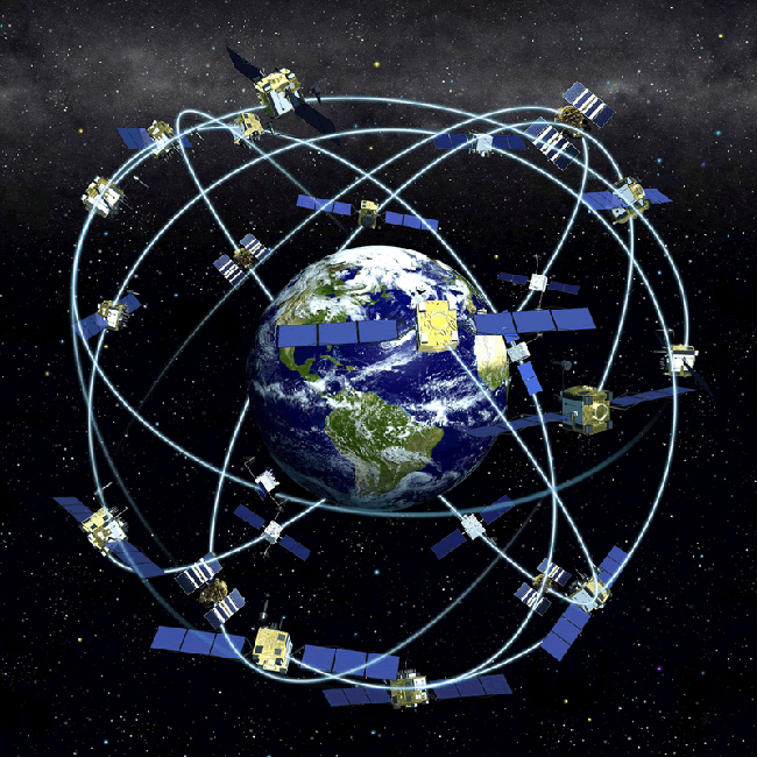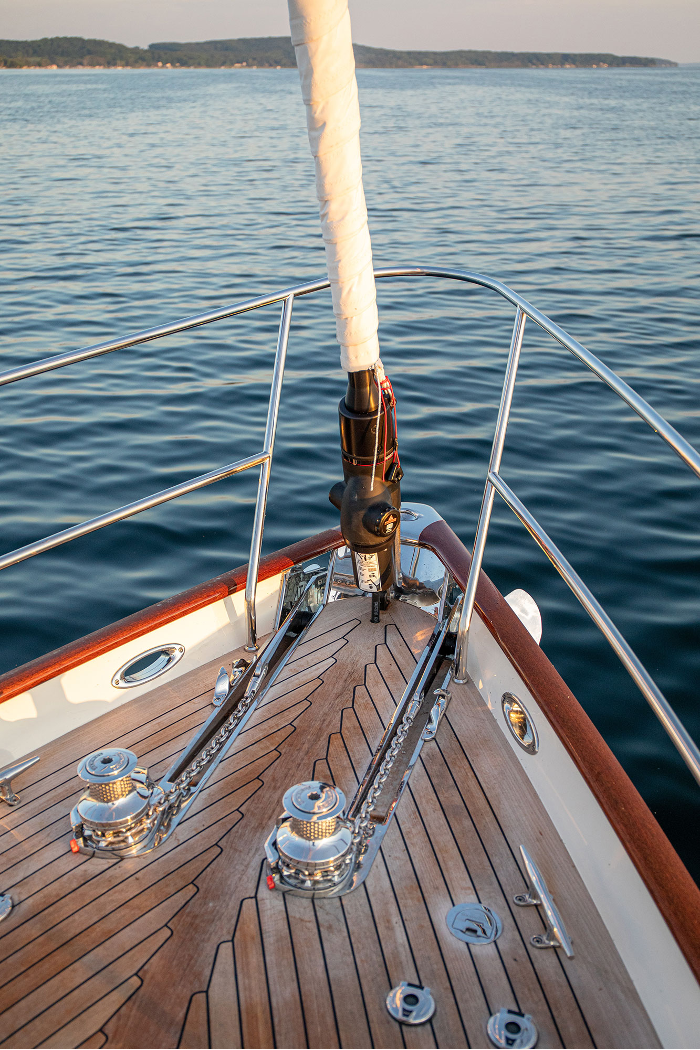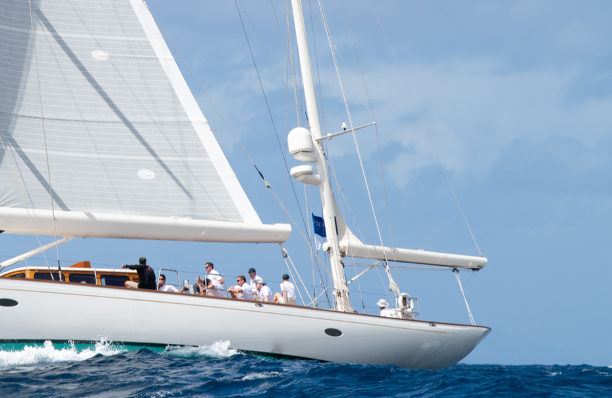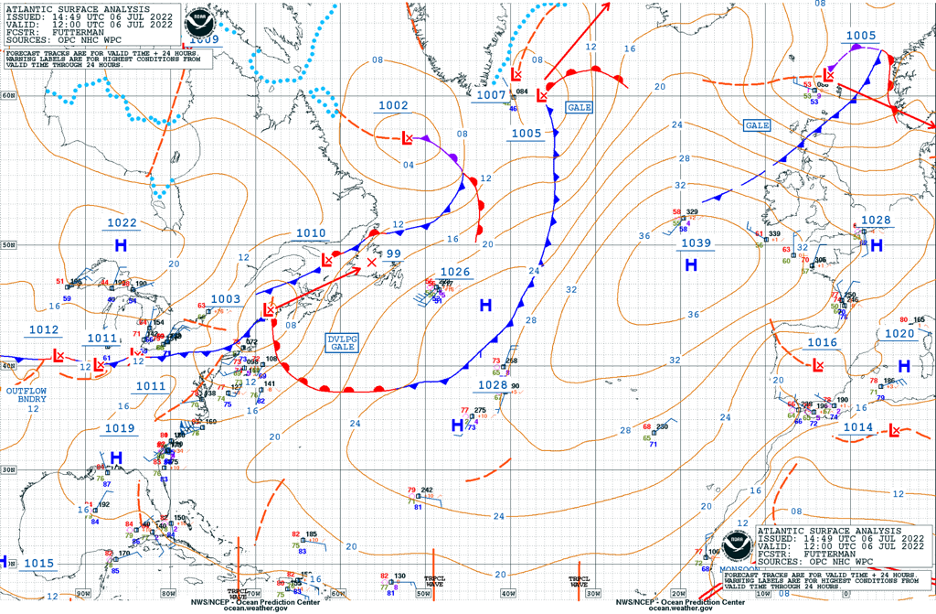5 Innovations that Transformed Long-distance, Bluewater Sailing

As Spirit of Yacht Tradition yacht designers we draw a lot of influence from the past. However, it’s easy to take for granted how far technology and engineering innovations have come. Like the iPhones attached to our hips, our daily lives have become completely integrated and intertwined with these technological marvels. These tools are now so prevalent, and us, so reliant on them, that it’s easy to forget how far we’ve come, and how quickly.
This is very true in the world of sailing and yachting as well. In particular, technology and engineering advancements have ushered in a new era of safety, comfort, and connectivity. Nowhere is the impact more broadly felt than in the category of long-distance passagemaking known as Bluewater Sailing.

Less than forty years ago, it took a small crew of engineers, navigators, and skilled hands to navigate an ocean crossing. These voyages were often perilous affairs fraught with unknowns and frequent encounters with storms, navigational challenges, collisions, and bleak dietary offerings. The amateur sailors who embarked on these long passages were often thought of as bold adventurers and risk-takers, tantamount to Himalayan mountaineers or early astronauts – stoic, self-sufficient individuals willing to jump headfirst into the great unknown.
Today, Bluewater passage making is enjoyed (yes, we’re using that word) by tens of thousands of non-professional sailors who regularly, and safely, make Bluewater voyages in comfort while maintaining close communication with the outside world. The sextant, chronometer, and ham radio connection have been replaced with satellites, laptops, and daily Instagram status updates. Canned food and stale coffee now replaced with artisanal salumi boards, heirloom tomato salads, and cornish sea bass (nobody tell Jimmy Buffet).
To be clear, we’re certainly not underestimating the power of the ocean nor the inherent risks and dangers of the Bluewater passages even with the latest and greatest tools. Any technology in itself is only useful when combined with a deep knowledge and the broad scope of experience of a seasoned seafarer. However, the level of comfort and safety made possible today through engineering and technology would certainly have defied the imaginations of early explorers and quite frankly even us when we began our first entry into the world of sailing.
Here are our top 5 technological innovations that transformed Bluewater sailing into what it is today.
1 Electronic Satellite Navigation

Up to the 1960’s, navigation relied almost entirely on methods that had been around since the Middle Ages—dead reckoning (keeping track of course and speed and estimating for currents and drift), and celestial navigation—the art of using mathematics, astronomical instruments, and significant physical skill to locate your position on the globe. Early electronic aids were only moderately successful in easing the complexities, and generally only worked near shore, where radio stations broadcast signals that helped mariners locate themselves. Radio Direction Finding (RDF) used commercial stations and a homing device to provide lines of position, with a limited degree of accuracy and pretty limited range. LORAN was a more involved system that used large government investment in lots of radio towers and timed signals to refine this system to provide latitude and longitude readouts—but again, was only useful relatively near shore—near the stations. SATNAV, and later, GPS, were game changers, especially when linked to easy-to-use chart plotters. Suddenly everyone could know their location within a few meters anywhere on earth. This innovation instantly meant an ocean voyager could skip years of training in celestial methods and techniques, and throw away lots of books recording star positions years in advance, and gain a huge margin of safety conferred by a true and accurate position whenever needed.
2. Mechanical Sail Furling Systems— Notably the Roller-furling Jib

This innovation is not particularly new—similar systems began to appear as long ago as 1900. But until the late 1980’s, the reliability and sturdiness of the systems was not acceptable for serious long-distance offshore work. With the ability to roll away your sails without wrestling them to the foredeck, cruisers could sail larger boats, in greater comfort, and importantly, in greater safety. A family or couple could realistically head to sea without feeling the need for extra hands.
3. Power-driven Refrigeration
While ocean-crossing was certainly possible without refrigeration, it was far less pleasant. It involved carefully dipping eggs in wax, packing them carefully, and hoping for the best. It meant you would buy tin cans, remove the labels (so they didn’t come off and clog the bilge pumps) and carefully paint on a label indicating the contents. It meant a cold drink was impossible once you were more than a couple of days outside port. With engine-driven or electric refrigeration, frozen food can be kept for weeks, and diet can be much more varied and healthy.
4. The Internet and Satellite Communication
Before satcoms, once offshore your connection with loved ones was severely limited. Best option was shortwave radio, which relied on a

network of committed and generous amateur “ham” operators. If you were lucky, and the weather and solar winds were with you, you MIGHT connect with a land-based ham who could patch in a call to your family in the event of emergency, or in the inevitability of loneliness. While generally reliable, VHF radio communication is only effective within a hundred miles or so of land—line of sight to a very tall tower—and shortwave is theoretically much longer-range than that, but not reliable.

With satellite communication, you can count on a reliable connection with loved ones, business, and safety nets. If budget is not an issue, you can go with full voice and data, and if on a shoestring, data only can cover the essentials.
5. Long-range Weather Forecasts
Weather prediction has improved dramatically in the last fifty years (despite our daily critique of the TV weather folks). Armed with weather from shortwave or (more reliably) downloads from satellites, voyagers can be much more confident that they’re shoving off into a good weather window—and if things change (as they always do), they’ll have advance notice. This is a very different case than say 60 years ago, when your best bet was to learn a bit of meteorology, bring your barometer, and shove off after a squint at the clouds, hoping for the best.
From when Arabian sailors first began using Polaris, an outstretched arm, and two fingers to determine their location, to the invention of the sextant, it took 3,700 years. From the invention of the sextant to the release of the Global Positioning System it took 352 years. The first mobile satellite phone was released in 1995 and a full satellite based internet service was released just 8 years later. It’s a cliche to acknowledge how fast technology is changing and how big an impact it makes. For those of us who spend time on boats powered by the wind and sails (an invention nearly 6,000 years old) there is a deeper appreciation for invention and innovation – both ancient and futuristic. Modern sailing is a juxtaposition of new and old, cutting-edge and classic, and it is this unique combination that makes sailing, especially Bluewater voyaging, so exciting and magical.
Further exploration: